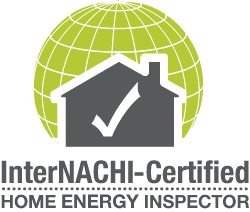It’s not unknown anymore that mold impacts your home’s indoor air quality. Mold is not just a matter of an unpleasant factor in the home but also a threat to your family’s health. Besides that, it also damages your home’s structural integrity.
Mold thrives in humid environments. Thus, controlling humidity levels in your home can ultimately prevent mold growth. Blessed Assurance assures your home stays protected from mold attacks by managing humidity levels at home.
In this blog, we will explore what Humidity mold grows. We will also guide you on what methods to consider for controlling humidity level to prevent mold. By the end of this blog, you’ll better understand the benefits and significance of humidity control in mold prevention.
So, without any further ado, let’s get started.
At What Humidity Does Mold Grow
Mold needs specific favorable living conditions to grow and reproduce. If there are suitable humidity levels, it will make that area a breeding ground. Typically, if an area has 30% to 50% humidity, mold can easily grow there. However, controlling humidity levels will prevent mold spores from settling to proliferation. Let’s explore some methods you can use to control humidity levels and, as a result, mold.
Methods to Control Humidity Level
Effective control of indoor humidity is essential in preventing mold growth. It also helps with maintaining a healthy living environment. Here are some reliable methods to keep humidity levels within the recommended range of 30% to 50%.
Proper Ventilation
Proper ventilation is a fundamental way to control indoor humidity. Ensure your home is well-ventilated, especially in moist areas, such as bathrooms and kitchens. Use exhaust fans to remove humid air and allow fresh air to circulate. Opening windows and doors can also help exchange moist indoor air with drier outdoor air.
Use Of Dehumidifiers
Humidity levels are higher in basements, crawl spaces, and other areas – And dehumidifiers work specifically for these areas. While choosing a dehumidifier, you must check its capacity according to your room’s size.
Humidity levels are higher in basements, crawl spaces and other areas – And dehumidifiers work specifically for these areas. While choosing a dehumidifier, you must check its capacity according to your room’s size.
Addressing Water Leaks
Water leaks, no matter how minor, contribute to increasing indoor humidity levels. That’s why you should inspect your home regularly for any signs of leaks. This may include water stains, dampness, or mold growth.
If you notice any roof, plumbing, or foundational leaks, don’t wait to get them repaired. This way, you’ll prevent water infiltration and mold growth side by side. Also, make sure that the gutters and downspouts are properly functioning. This will keep the rainwater away from your home’s foundation. Thus, there will not be favorable conditions for humidity and mold.
Monitoring Indoor Humidity
Instead of complaining about humidity and mold growth later, be proactive. Invest in buying a hygrometer and keep a check on your home’s humidity levels. This is a small and inexpensive device that will update you on your indoor humidity.
You can monitor the humidity levels by placing hygrometers in different rooms. Specifically, rooms with moisture intrusion like basements or crawl spaces. This way, you keep track of your home’s indoor. You’ll also be able to take immediate action if levels exceed the recommended range. If you consistently find high humidity in specific areas, consider getting professional help.
Benefits of Humidity Control in Mold Prevention
Maintaining optimal indoor humidity levels is effective in preventing mold growth. It also offers a multitude of other benefits for your home and well-being. Let’s look closely at the advantages of humidity control in mold prevention.
Limits Moisture
Without adequate moisture, mold spores may land on surfaces, but they will remain dormant. Limiting humidity prevents condensation from forming on walls, windows, and other areas that can supply mold with the damp conditions it needs to proliferate. Proper humidity control ensures surfaces stay dry.
By controlling humidity levels, you limit the availability of moisture in your home. Mold requires moisture to thrive, so reducing this moisture source significantly inhibits its growth.
Prevents Condensation
High indoor humidity can lead to condensation on windows, walls, and other surfaces. This moisture buildup provides an ideal breeding ground for mold. Proper humidity control prevents condensation, removing a vital ingredient for mold growth.
Lessens Chance of Mold Colonies
Mold spores are always present in the air. However, high humidity provides the moisture mold needs to thrive and grow into colonies. Regulated humidity removes this ideal environment.
Controlling indoor humidity takes away this moisture source and drastically lessens the chances that floating mold spores will be able to propagate. This creates an unfavorable environment that restricts mold growth.
Protects Building Materials
If indoor humidity is allowed to remain high for extended periods, it can promote mold growth on many common building materials. Materials like wood framing, drywall, wallpaper, carpet, insulation, and even concrete are all susceptible to mold if excess moisture is present. Unchecked humidity encourages mold growth on common building materials. This not only damages the surface but can compromise its structural integrity.
Creates Unfavorable Conditions
Maintaining low humidity levels creates an inhospitable environment for mold. Mold spores require specific conditions to settle and reproduce, and low humidity disrupts these conditions, preventing mold growth.
Improved Ventilation
Effective humidity control often involves proper ventilation. Well-ventilated spaces promote air circulation, reducing stagnant, humid air pockets where mold can develop. Improved ventilation prevents mold and also enhances the overall air quality in your home.
Final Thoughts
To sum up our discussion, understanding the correlation between humidity levels and mold growth is effective for mold prevention. Try maintaining indoor humidity within the recommended range of 30% to 50%. And employ proper ventilation techniques and tools like dehumidifiers. This blog discussed at what humidity does mold grow and the benefits of controlling humidity level to prevent mold. We suggest you maintain the humidity levels in your home to prevent mold growth. Explore more of our blogs to learn more.









